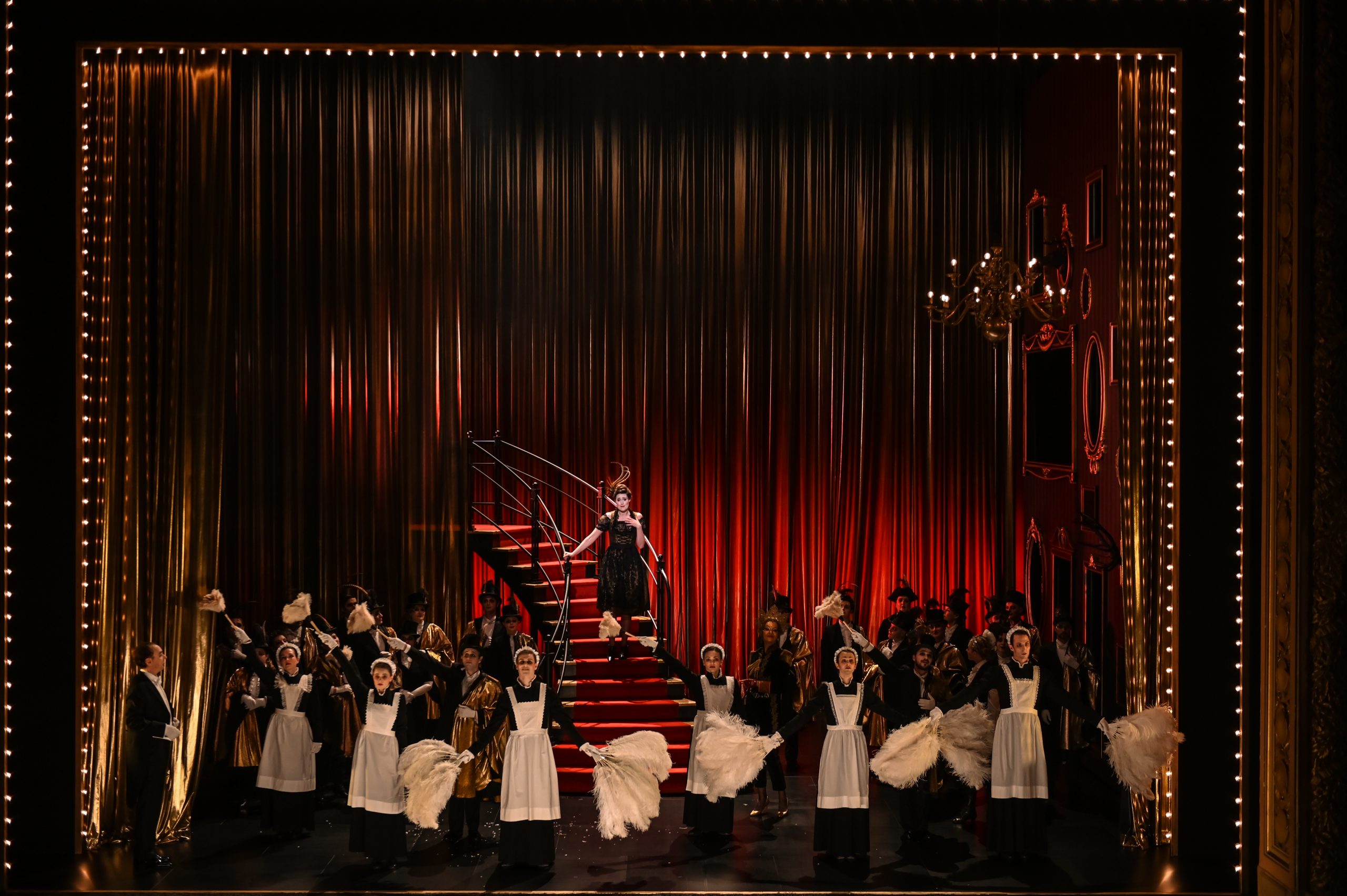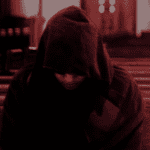After an absence of over 20 years, Johann Strauss Jr.’s La Chauve-Souris (Die Fledermaus) made a grand return to Rennes, France this May in a delightful co-production between Opéra de Rennes, Angers Nantes Opéra, Opéra de Toulon, and Opéra Grand Avignon.
A performance of the operetta was filmed in Rennes’s opera house on May 12 and then broadcast on France Musique’s Samedi à l’opéra on June 5. Four days later, the filmed performance was shown for free on large screens in over 30 cities in the Brittany and Pays de la Loire regions, on nine local television stations, on France 3 Pays de la Loire and France 3 Bretagne, as well as online including the Angers Nantes Opéra’s YouTube channel as part of the annual Opéra sur Écran(s) (Opera on Screen(s)).
Two languages were used for this bat blitz of northwest France. The vocalists sang in the original German and gestured while a French-speaking narrator, a novel addition by director Jean Lacornerie, spoke almost all of their heavily modified dialogue and supplied sundry information about the characters and the plot. French subtitles of the sung German were provided for viewers.
Dressed in Marlene Dietrich’s signature Morocco look of black tux, top hat, white bow tie, and cigarette, plus some feminine touches in the form of a frilly ruffle shirt and ruby red fingernails, French actress Anne Girouard was a tour de force as the narrator, modulating her voice as she took on the various spoken lines. At the start of Act III, Girouard hesitatingly explained that since the actor who was to portray Frosch was at home due to a “contact case,” the stage crew was in the process of striking the set. It was, of course, a total spoof, as Girouard elicited the audience’s applause to continue the proceedings with her humorous portrayal of the soused jailer, visually aided a bit later by a camera operator quasi-drunkenly swaying the camera.

Anne Girouard as the narrator and Stephan Genz as Eisenstein in Opéra de Rennes‘ production of Die Fledermaus. Photo: Laurent Guizard
The cast, culled mostly from Germany and Austria, was led by baritone Stephan Genz’s rather earnest Gabriel von Eisenstein who trailed off on the final syllables of some words in his Act II duet with Rosalinde.
German soprano Eleonore Marguerre was a solid Rosalinde though much of the text in “Feuer, Lebenslust,” the second half of Klänge der Heimat (the “Csárdás”), was indecipherable.
As Adele, Canadian soprano Claire de Sévigné blended beautifully with Marguerre at the close of their Act I duet, and sang “Mein Herr Marquis” (the “Laughing Song”) in clear, pure tones replete with lovely high G’s, tossing in an interpolated high D near the end.
Austrian soprano Veronika Seghers sang the role of Ida, Adele’s sister, while Swiss tenor François Piolino was the dimwit lawyer, Dr. Blind.
German tenor Milos Bulajic, who celebrated his birthday on the day of the filming, grew in vocal strength as the operetta progressed. Alfred’s opening salvo, “Täubchen, das entflattert ist,” needed to be sung with more attention to line and a less pronounced vibrato.
Austrian bass-baritone Thomas Tatzl was a deliciously sonorous Dr. Falke. No less enjoyable was Tatzl’s countryman, Viennese bass-baritone Horst Lamnek, who, as the prison governor Frank, made his mark dressed in a ballerina’s tutu and leotard in Act III.
Kassel-born, Massachusetts-raised mezzo Stephanie Houtzeel was an entertaining Prinz Orlofsky. Houtzeel sang “Ich lade gern mir Gäste ein” (Orlovsky’s famous couplets) with panache while doing magic tricks with bottles, and later kicked off a spunky rendition of “Im Feuerstorm der Reben” to finish of Act II.
Gildas Pungier’s 24-voice Chœur de Chambre Mélisme(s), in residence at the Opéra de Rennes, were energetic and effective in their scenes. Ditto for the six dancers and Raphaël Cottin’s choreography.
Bruno de Lavenère’s simple set—a vintage photo album with numerous window frames on two flats, a chandelier and a red-carpeted staircase—as well as his colourful costumes, in Orlofsky’s case eye-catchingly fanciful, suggested the fin-de-siècle.

Bruno de Lavenère’s set design for Opéra de Rennes‘ production of Die Fledermaus. Photo: Laurent Guizard
In the pit, Claude Schnitzler, using Francis Griffin’s reduced orchestration, led a somewhat physically distanced 23-piece Orchestra National de Bretagne. Through no fault of its own, the 13-piece string section, in particular, lacked a juicy sound.
There were a number of cuts to the score. The second verse of Rosalinde’s Couplets in Act I’s Finale fell by the wayside as did the tiny parts of Melanie, Faustine, Natalie and others in Act II’s Entreact, plus Act III’s entire Entreact and a portion of its Terzett. The traditional interpolation of Strauss’s “Unter Donner und Blitz” polka was not included. Instead, portions of the original Ballett were played as the narrator recounted the tale of von Eisenstein’s practical joke, tailoring her cadences to those of the music.
In a sign of the times and perhaps of the shape of things to come, the closing credits also mentioned that this was “a production framed by a health protocol coordinated by Hélène Corre,” deputy technical director at Opéra de Rennes.
La Chauve-Souris was to have flown its way to Nantes for four performances at the end of May and three performances in Angers in early June. However, due to the pandemic, those were all cancelled. As of this writing, the production is still scheduled to land in Avignon on June 19 and 20.
More information for Die Fledermaus can be found here.











